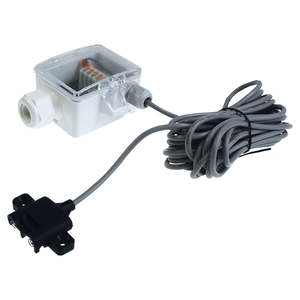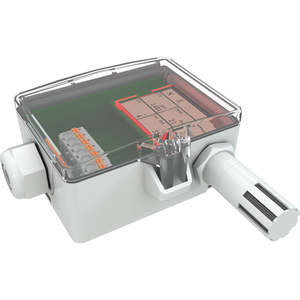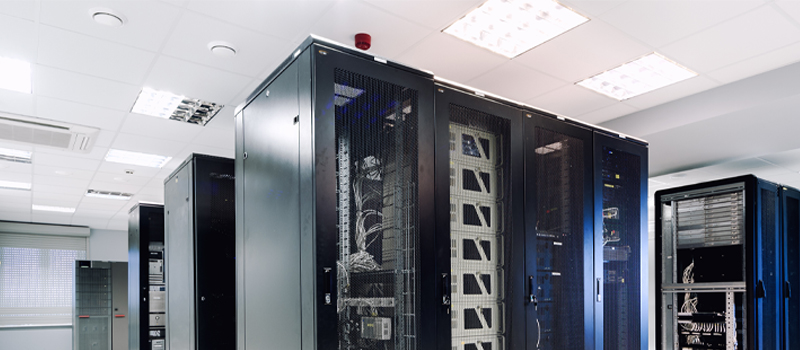Effective protection of electronics in data centers
The air conditioning of data centers is of central importance. High-end modern computers store data, whose constant availability is essential - losing them, would be a business disaster. The servers are in operation 24 hours a day, 365 days a year and for many years to come. The heat they generate can be a real threat to servers if temperatures are not monitored and controlled throughout.
Even in the planning phase of a data center, powerful air conditioning should therefore be a key priority. There are in general two options available: The heat can be dissipated from the building or alternatively, it can be recirculated to use the contained heat energy. The heat exchange becomes particularly effective when the air is permanently circulated. It is further important to comply with recommended guidelines for temperature and humidity.The more consistently these are maintained in the data center, the better for the overall performance and energy balance. Temperatures between 22°C and 25°C and a humidity of 30 to 55% are ideal.If the relative humidity rises to more than 90%, condensation and dew droplet can occur.
Sensors play a key role in monitoring and controlling the indoor climate. By using sensors, especially in critical spots (e.g. chilled water pipes), the data center and its technical equipment can be effectively protected. For the sensitive electronics in data centers, sensors for measuring the indoor climate are indispensable for a reliable detection of temperature and humidity. They are essential for ensuring that the target sensor values for server environments are maintained at all times.
The use of sensors to detect condensation on pipes and ceilings is also recommended in data centers, since moisture can lead to temporary failure of the air conditioning system and - worst case – cause servers to break down.

Similarly, the installation of leakage sensors is also recommended. They are able to detect even smallest water leaks on the ground.
The market offers a wide range of products, but it is obvious, that not all sensors are identical. When planning a project, the focus should always be on the high quality of the solutions used – especially in critical application. This commences with the absolute accuracy, which ensures precise measurements. Long-term stability is also one of the essential requirements that the sensor technology should fulfill. As the size of a data center increases - and thus the number of sensors used - a high degree of maintenance-free operation becomes important. It helps to reduce efforts and costs in daily operations.
Planners and building operators can make use of a wide range of application-specific sensors from Thermokon. The spectrum of possibilities is virtually endless and comprises room sensors with various protection classes from IP20 to IP65 to pendulum sensors, suspended from the ceiling or in the server rack, equipped with LCD displays to quickly display its status and readings.
To optimize the process safety, it is highly recommended to use live-zero sensors with 4..20 mA, 1-10V or BUS communication to get notified immediately in case of dropouts, line breaks or failures. A corresponding error message is also visualized on the display - a double safety mechanism that literally pays off: it makes a valuable contribution to maintaining the high safety standards in data centers, which are often even higher than the similarly high requirements of the industry.

Servers need constant ambient conditions with moderate temperatures and humidity levels – considering that they generate plenty of heat. Since the cooling capacity required for proper operations can be costly, it is the interaction between all peripheral devices to ensure a constant indoor climate and to keep the energy costs low. The challenge here is to ensure the greatest possible protection of the servers while at the same time ensuring optimum efficiency and cost-efficient operation. This can be achieved through intelligent control of building automation using high-quality sensors.


